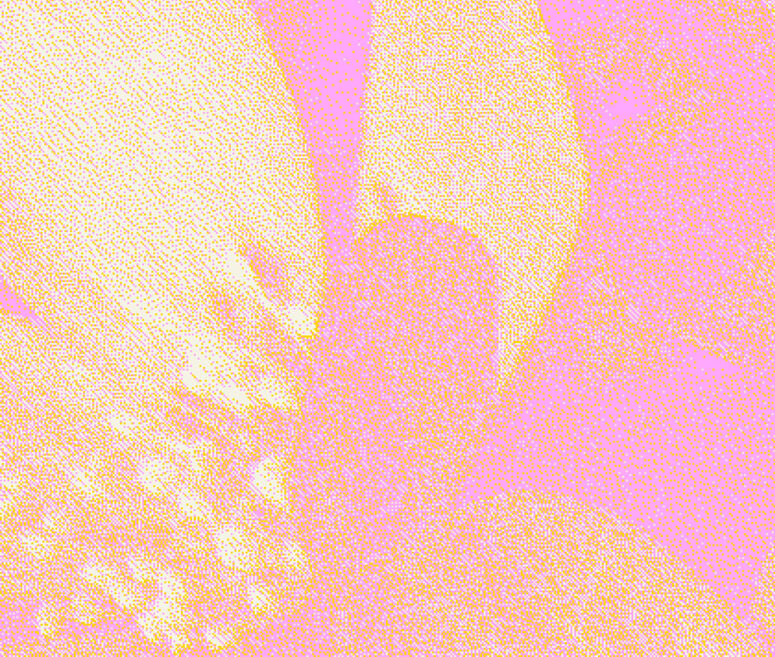Ursula K. Le Guin, in The Carrier Bag Theory of Fiction (1986), suggests moving away from hero-centered action and success stories, starring phallocentric weapons and linear temporalities of conquest and destruction, so as to rethink human evolution through a different tool: the carrier bag, a prerequisite for gathering, foraging, and collecting; for containing and receiving rather than for attacking, striking, and killing.
The author calls for new and never-before-told stories, while acknowledging that people have been weaving, sowing, singing, telling and writing non-heroic stories since the dawn of time.
“Thinking Like a Mountain” is for us this bag, this shell: bonds that weave bonds, stories that tell other stories, to paraphrase Donna Haraway[1].
Part of the stories told in this first phase of the program solicited territories as places of sociality through sound thinking, highlighting how sound has the power to connect the human to the world in deep and meaningful ways.
It is the meaningfulness of voice, the full presence of sound in our lives, the polyphonic set of perspectives and freedoms that are found to coexist, inhabit a space, dialogue with each other, even having the courage to be sometimes discordant, that occupy a central position in Sonia Boyce’s practice. In this sense, sound agency—the voice, but also listening—becomes a political and transformative act because it cultivates empathy, care and sensitivity toward “the other.”
Benevolence begins with contemplation of the ornate vaults of the Sala Tassiana, with the seventeenth-century frescoes of grotesques and allegories of the virtues of good rulers by Pietro Baschenis that inspired the title of Boyce’s work. And benevolence, portrayed by a woman pressing her breasts from which copious milk flows that nourishes various animals, which the artist chooses to emphasize. It was while observing this figure lovingly scattering what nature has given her that the singer spontaneously intoned the Kyrie Eleison, one of the oldest litanies in the Christian liturgy, whose original meaning, preserved from the Byzantine rite, can be translated as “Lord, show us your benevolence.” The prayer is rhythmically interspersed with the declamation of the virtues.
Closing the first sequence is what appears to be an explicit request for “Silence,” received by Boyce as an equally explicit invitation to listen: listening as empathic awareness.[2]
Studying the behavior and interaction with the environment of three birds of different species, artist Mercedes Azpilicueta developed the performance Que este mundo permanezca.
The Biodiversity Oasis in Brembate (the place that hosted the action) seemed to be shrouded in silence, despite the large group present and its geographical location in one of the industrial hubs of the province of Bergamo.
What kind of silence inhabits that place?
In Living as a Bird (2019), Belgian philosopher Vinciane Despret maps an alternative trajectory of interpretation of scientific theories of animal behavior, not to try to determine the primary cause of birdsong, but to enrich the hermeneutic landscape of all possible meanings of their actions. Many studies are analyzed, but his theoretical access points are Gille Deleuze and Félix Guattari, whose concept of territory as an “instrument of expression” Despret makes his own; and Donna Haraway and Baptiste Morizot from whom she draws the encouragement to bring into one’s existence other patterns of attention and of being aware of the multiple modes of existence.
Reading this volume, which highlights the central role of song in the process of territorialization of birds (“sung territories”), we felt we could trace coordinates for reading the history of the kingfisher, the green woodpecker and the hoopoe in the Oasis and beyond. The author highlights how singing is not just a way of marking a territory, but a complex form of interaction involving reciprocity and adaptation.
In an interview for Le Monde in 2019, Donna Haraway suggests, as appropriate for our time, the use of the term “Phonocene.” As part of the Biennal de Pensament in Barcelona, Despret and Haraway return to talk together about the Phonocene not to categorize a geological era, but rather to express an invitation to listen, to pay attention to the songs of birds, whales, and the hum of insects as expressions of different ways of inhabiting the Earth, in time for them not to disappear. The dialogue around an era of sound is about all voices, whether human or nonhuman, artificial or organic, imaginary or real, which, according to the two scholars, we had stopped listening to and which many rediscovered during the silence imposed by lockdown.
Living in the Phonocene is an invitation to multiply possible versions of the world; it is to produce a multiplicity of narratives. And the ethical and critical practice we hope to carry with us always in the bag of “Thinking Like a Mountain.”
To live our age by calling it “Phonocene” means learning to pay attention to the silence that a blackbird’s song can bring into existence.[3]
Valentina Gervasoni
[1] Donna Haraway, Staying with the Trouble. Making Kin in the Chthulucene. Duke University Press, 2016.
[2] Read Brandon LaBelle’s insightful essay on Benevolence: The Joy of Cacophony, Milan, Lenz, 2024.
[3] Vinciane Despret, Living as a Bird (2019), Medford: Polity Press, 2022, p. 161. [traduzione dell’autore].
T


